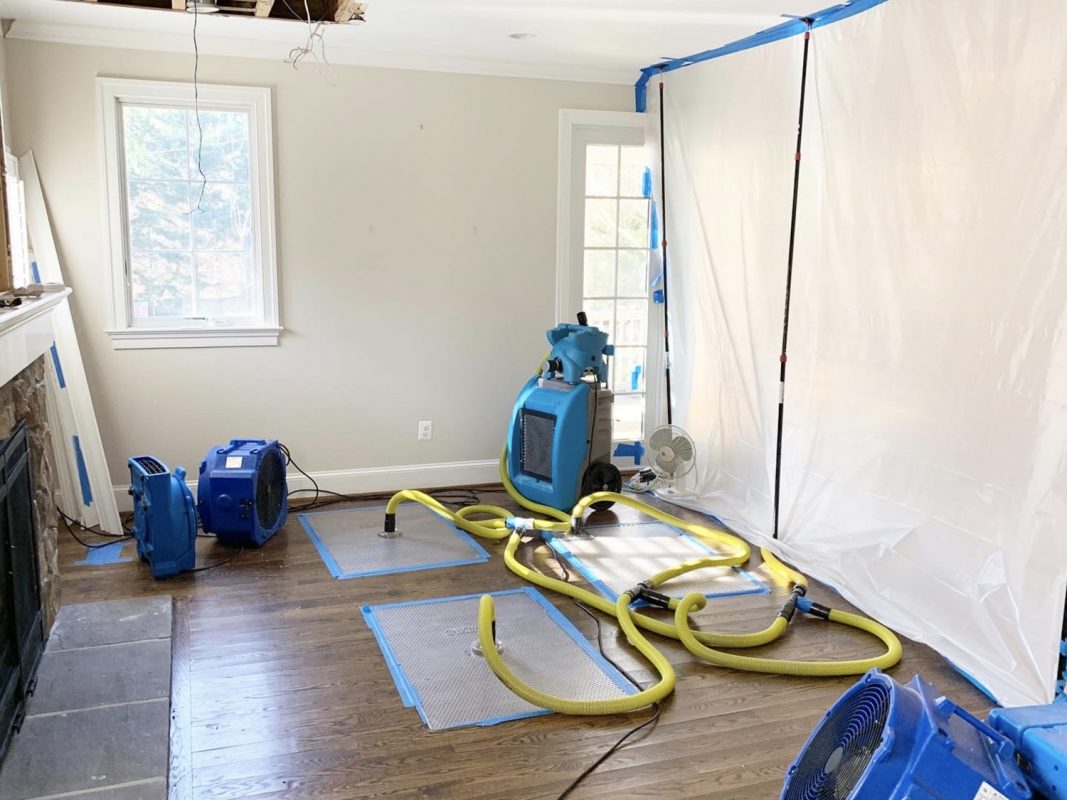Everyone has to deal with water damage cleanup sooner or later. If you’re lucky and have some DIY elbow grease, you can deal with it, but getting things back to normal can be a challenge.
The first step in water removal is remediation. It’s likely you are unfamiliar with this step if you are like most property owners.
Water damage is a problem that plagues homes and businesses in NYC every day, which is why we’re always ready to help when you have a question.
What is water remediation, what it does, and why it is so important are explained in this overview.
Table of Contents
Remediation Of Water – What Is It?
Mitigation, remediation and restoration are three steps to repairing water damage. Restoration is familiar to most property owners. The goal of this step is to restore the affected area to its pre-damage state. There is some overlap between mitigation and restoration techniques, but remediation plays a critical role.
The water remediation process consists of cleaning up, drying, sanitizing, and repairing. This part of the process creates a connection between the initial mitigation and final restoration.
Even though there are some crossovers between mitigation and restoration techniques, remediation remains an integral part of the process.
Differences Between Mitigation And Remediation?
Mitigation is a form of emergency response used for water removal. When it comes to water removal in New York City, mitigation contains initial damage and prevents it from spreading. As a result of the work, secondary damage such as buckled floors and moldy walls is minimized.
Water remediation consists of cleaning and repairing the damaged areas so that they can be restored finally. As a result, properties are returned to their pre-loss condition in a dry, sanitary environment.

Why Is The Water Remediation Process Essential?
Water damage mitigation is immediately followed by remediation. While water remediation utilizes a wide range of techniques, some phases are similar to mitigation.
Through these five steps, every water removal project moves from mitigation to restoration.
1. Removal Of Water Complete
Floors, carpets, drywall, and ceilings are cleaned of residual water by water damage teams. Furnishings and personal items are treated with specialized methods for water removal.
2. Exact Moisture Measurement
Every effort is made to identify and remove hidden moisture pockets. In this way, problems such as wood rot and mold growth can be stopped in their tracks.
3. Sanitizing And Cleaning
A variety of products and tools designed to avoid further damage are used to clean away all affected surfaces and materials. A sanitizing product approved by OSHA is applied after the cleaning.
4. Process Of Final Drying
As part of the water remediation process, structural drying takes place. The drying process may take several days or longer depending on the equipment.
5. Repairs Prior To Restoration
The final step of restoring a building involves completing the repairs. For example, flooring, ceilings, and drywall can be repaired. It is often necessary to tear out materials that cannot be salvaged during remediation.
How Else Do Water Removal Professionals Help?
You never know what to expect when facing a big remediation project. These courtesy and services are provided by the best water damage technicians.
- Work will be carried out according to the project manager’s instructions.
- You can adjust your schedule based on the schedule you’re given.
- A professional company provides mitigation, remediation, and restoration services.
- Water damage insurance claims are filed by our in-house staff.
The property will be restored to its pre-loss condition after the project is complete. As a result, you have a partner you can reach out to for any future water damage to your house or business.

